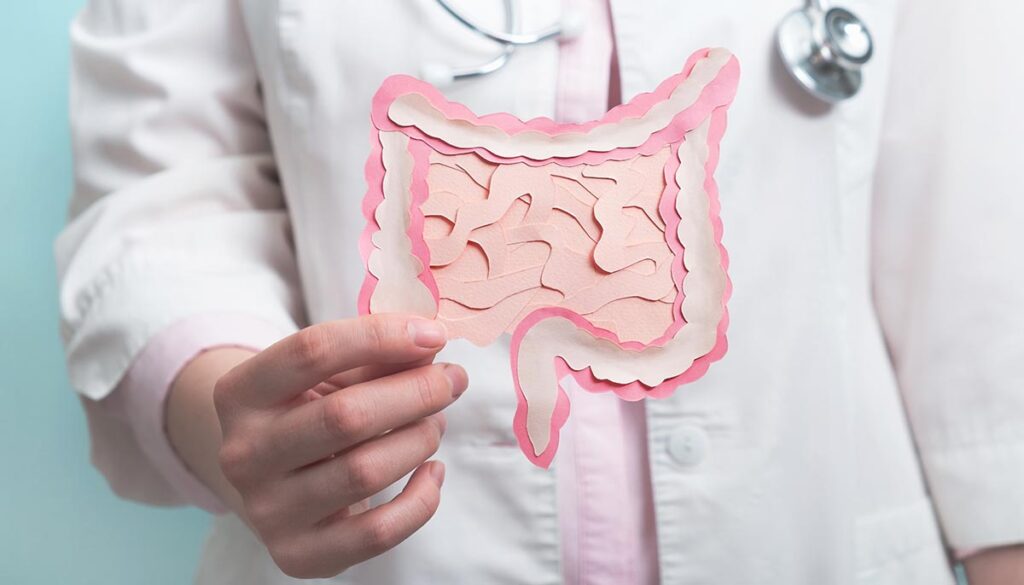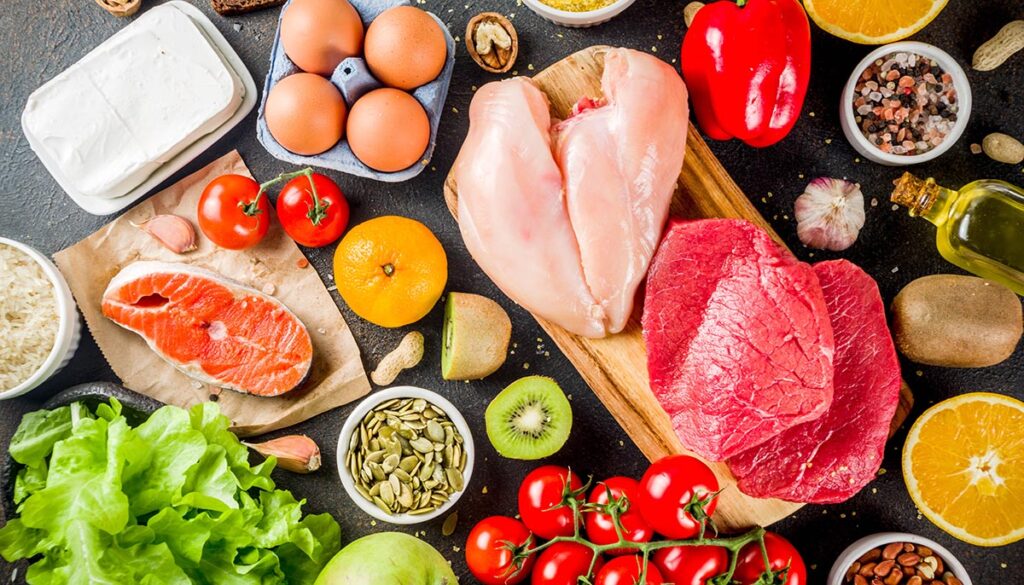Chances are good that you’re reading this because you’ve heard about FODMAPs before and want to know more. Maybe a friend recommended that you check it out, or maybe you were searching the internet for something to explain your digestive symptoms.
Hey, we’ve all been there.

Here’s the rundown on the low FODMAP diet, from how sneaky short-chain carbohydrates create a luau for your gut bacteria to the ways that a FODMAP detox can benefit your health.
Disclaimer: We’re not doctors at HeyPumpkin, and you should talk to a medical professional before making any major dietary changes.
FODMAPs Defined
What the heck is a FODMAP? The acronym stands for “fermentable oligosaccharides, disaccharides, monosaccharides, and polyols.”
As if that clears anything up!
- Oligosaccharides are found in wheat, rye, onions, garlic, and legumes
- Disaccharides, such as lactose, are found in dairy products
- Monosaccharides, such as fructose, are found in fruits as well as honey
- Polyols are found in both produce and artificial sweeteners
In short, these are types of carbohydrates that don’t like being digested. Rather than being broken down during the natural process of digestion, they can get stuck in the intestine. They act a little bit like sponges, drawing water in your colon while they hang out.

What happens next is not so pleasant, and the effects depend on the type and amount of gut bacteria in your body. Bacteria love FODMAPs, and they’ll have a grand old time feasting on fermented carbs. While they might be happy, you can experience anything from bloating to stomach cramps to diarrhea to constipation.
I said it wasn’t gonna be fun.
Why Are FODMAPs Like This?
Although scientists aren’t totally sure about the whys and wherefores, they know that some people are more sensitive to certain FODMAPs than others. Many of these symptoms will be familiar to people who suffer from irritable bowel syndrome. It’s estimated that about 15-20% of people in the U.S. have IBS, but doctors aren’t totally sure what causes it. Stress seems to be a factor, but genetics might be at play, too.
A low FODMAP diet can help alleviate symptoms of IBS as well as other inflammatory digestive disorders. Science has shown tentative links between gut health and overall wellness, so if you’re struggling with GI issues, it’s possible that you could be experiencing related symptoms in other parts of your body.

It’d be a lot simpler if everyone had the same food sensitivities, but that’s just not the case. Many folks can eat wheat bread just fine, while others will end up miserable after a single piece of toast. You’re a little more likely to have issues with certain FODMAPs if a relative also has those issues, but even that isn’t a guarantee. To find out whether you can safely digest these carbs, you’ll need to do a little science experience.
How the Low FODMAP Diet Works
The Low FODMAP Diet was developed by researchers at Monash University in Australia. They studied people with IBS and discovered that certain foods made symptoms worse. By following this diet, researchers were able to alleviate symptoms in 75% of the subjects.
By totally cutting out known triggers and then slowly reintroducing them, the researchers discovered the best and worst foods for folks with IBS and other digestive disorders. You can do the same thing at home, but make sure that you talk to your doctor before jumping in.

It’s important to remember that any elimination diet such as this one should not be followed indefinitely. The Low FODMAP Diet was developed to pinpoint the most likely culprits in your digestive woes. Significantly restricting the variety of foods you eat for more than the recommended timeframe can lead to nutritional deficiencies. You don’t want to trade one gut problem for another, right?
Experts recommend that you try this elimination diet for at least two weeks but no more than six weeks. After that, you can try reintroducing one food at a time. For example, if you’ve been missing your Greek yogurt parfait at breakfast, you should take things in stages. First, try the yogurt and see how you feel. Three days later, if you don’t experience any symptoms, you can add honey to the yogurt. Still good? Throw in a handful of blackberries.
Step by step, you can discover which foods trigger your symptoms. It’s essential to keep a food journal during this process so that you know exactly what worked—and what didn’t. At the end of a couple of months, you’ll be able to say with confidence what kinds of foods are on the permanent naughty list.

According to Medical News Today, some dieticians have concerns over how restrictive the diet can be. “Many dietitians now take the approach of a FODMAP-gentle rather than a FOPMAP-free diet,” Lana Barhum writes. An approach that involves moderation, rather than an all-or-nothing attitude—is more likely to succeed no matter what kind of habit you’re trying to build.
One more thing: If you struggle with disordered eating, then this might not be the right approach for you. As ever, talk to your medical team before you decide to make big changes to your diet.
High FODMAP Foods to Avoid
First, let’s look at the foods you should avoid during this dietary experiment. These foods are known to have high concentrations of FODMAPs, so they’ll need to take a seat on the bench for a little while.

As you read this list, you may experience some strong emotions. While many of these foods will be easy to miss for a couple of weeks, others might be your all-time favorite snacks. Remember, this is all temporary.
- Fruits: Apples, apricots, blackberries, cherries, grapefruit, mango, nectarines, peaches, pears, plums, pomegranates, and watermelon, plus canned fruit, dried fruit, and fruit juice, which are all high in fructose.
- Vegetables: Avoid artichokes, asparagus, beets, brussels sprouts, cauliflower, celery, mushrooms, and okra. Alliums (garlic, onions, leeks, scallions, etc.) are off the menu for now.
- Grains: Wheat is the biggie here, which cuts out most baked goods as well as pasta and couscous. Also avoid barley, farro, and rye.
- Legumes: Most beans and peas are no-gos on a low FODMAPs diet. Keep in mind that this also includes soybeans and hummus, which are made of chickpeas.
- Dairy: Milk, cream, most soft cheeses, yogurt, and especially ice cream are off the table for now. You might also want to limit oat milk and soy milk.
You should also cut out artificial sweeteners as well as agave, honey, and molasses.
Low FODMAP Foods to Enjoy
Right now, you might be wondering what you can eat. Didn’t that list of forbidden foods nix basically everything?!
Don’t worry, you’ll still be able to enjoy a variety of fruits, vegetables, proteins, and grains. It’ll take a little planning—and a lot of label reading—but pretty soon you’ll be a certified FODMAP detective.

Here’s what you can enjoy during the next two to six weeks:
- Fruits: You can enjoy bananas, blueberries, most melons, grapes, kiwi, oranges, lemons, limes, papayas, pineapples, raspberries, and strawberries.
- Vegetables: Most leafy greens are allowed, as is cabbage and bok choy. Eggplant, peppers, and tomatoes—which are all from the same plant family—are okay. Sweet potatoes, regular potatoes, and root veggies like parsnip, turnip, and carrots are good to go. You can also chow down on all types of squash. And don’t forget the corn… but in moderation. Broccoli is a little controversial, and it depends on which dietician you ask. Proceed with caution.
- Grains: Rice, oats, and quinoa are the main grains in this diet. You can also enjoy bulgur wheat in moderation, as well as more out-there grains like amaranth and spelt. Gluten-free baked goods are okay as long as they don’t contain anything else on the no-go list.
- Dairy: Butter (hallelujah!) is on the menu. So are brie, camembert, mozzarella, and parmesan. You can also enjoy coconut milk, rice milk, and almond milk. If you want to spring for lactose-free dairy products, make sure that they don’t contain ingredients that are otherwise forbidden.
- Nuts and Seeds: You can enjoy pretty much any nuts and seeds except for cashews. Limit almonds and hazelnuts to small servings, however.
- Proteins: Eggs, tofu, and tempeh are your best vegetarian sources of protein. The low FODMAP diet allows for all meat, poultry, and seafood, too.
You can have regular sugar (brown, white, or powdered) on the low FODMAP diet, as well as maple syrup. However, you might consider cutting back on the sugar anyway.
Other Things to Consider
So you did the low FODMAP thing and found out that apples are a big trigger for you. That’s a bummer! But you don’t need to declare a lifelong ban on those delicious Honeycrisps. You may be able to tolerate a little bit of fructose in your diet, as long as you don’t overdo it. If you love apples, then it’s worth experimenting to see if you can still enjoy them in moderation.

Earlier in this post, I mentioned that stress has been linked to IBS. Unfortunately, making dietary changes can be really stressful. To avoid stressing yourself out while you try the low FODMAP diet, consider making a few other lifestyle changes. Meditation and gentle exercises like yoga or walking can help. So can practicing mindful eating—meaning meals without the distraction of your phone or TV, where you can just focus on the food.
Read More: 6 Simple Yoga Asanas for Your Spiritual Practice
Your body is a whole bunch of interconnected systems, and it might help to picture it as a whole instead of individual parts. Your health depends on every system working together in relative harmony, so don’t neglect everything else while you focus on your diet.













